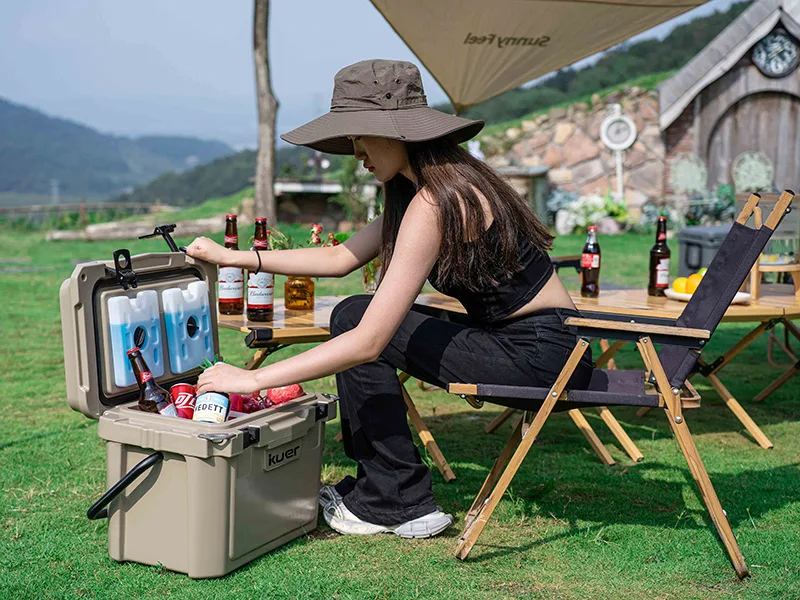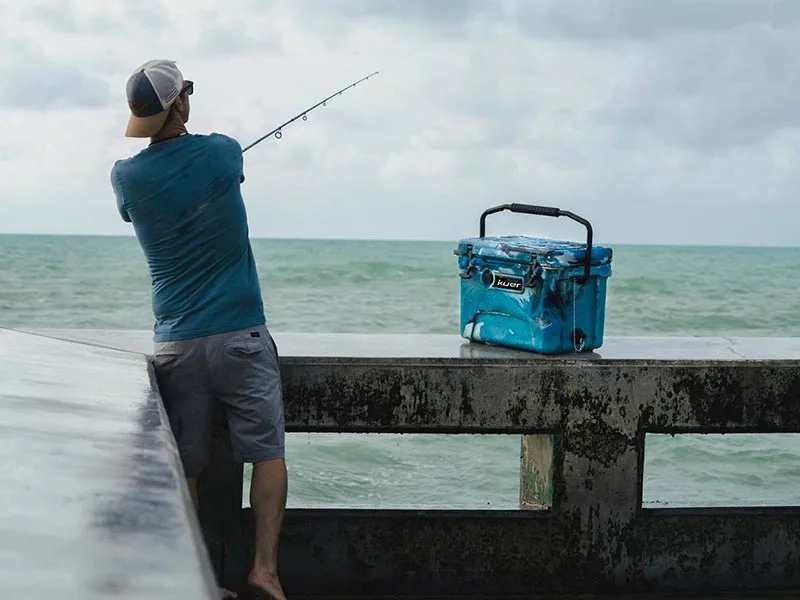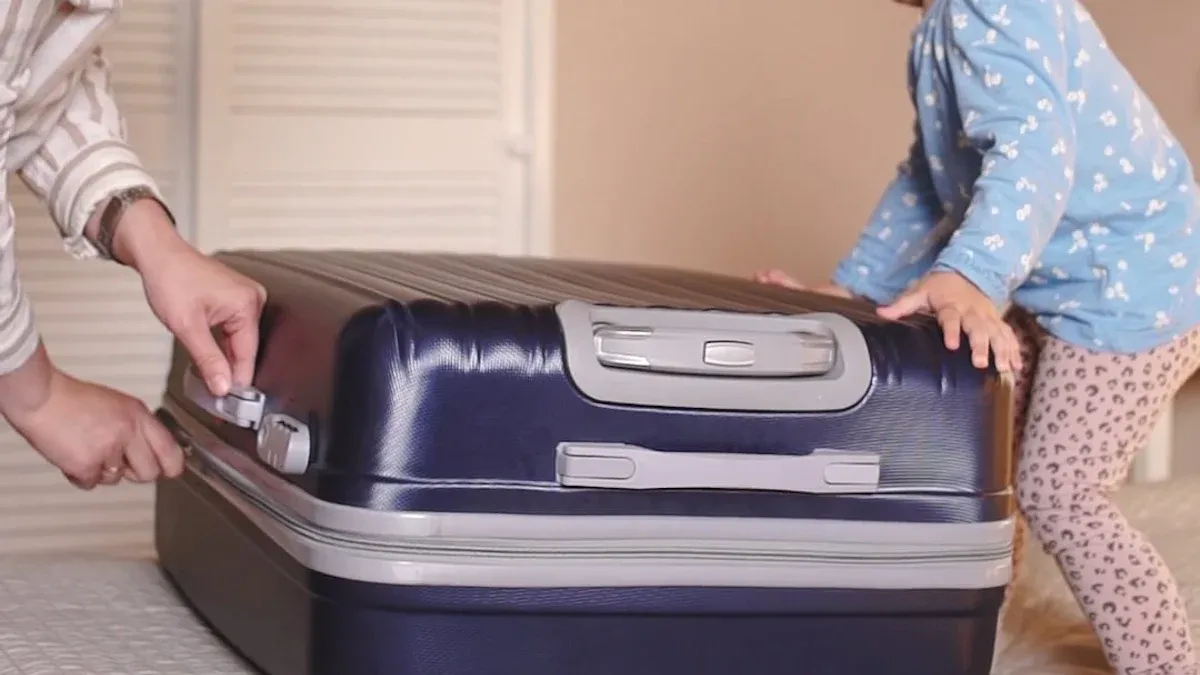

You can find the secret to a perfect large soft cooler bag where three critical elements work together. Understanding this synergy is the first step in learning how to choose a soft cooler.
The ideal cooler combines:
- High-density closed-cell foam insulation.
- A rugged, puncture-resistant waterproof exterior.
- A truly leakproof zipper system.
The market for these cooler bags is expanding rapidly, giving you more options than ever. This growth in soft coolers, however, also creates significant price gaps between brands.
| Brand | Product Type | Price |
|---|---|---|
| RTIC | 24-can backpack soft cooler | $160 |
| YETI | backpack soft cooler | $325 |
This guide will help you navigate the market, from premium names like YETI to high-value challengers like RTIC and KUER.
Anatomy of a Large Soft Cooler Bag
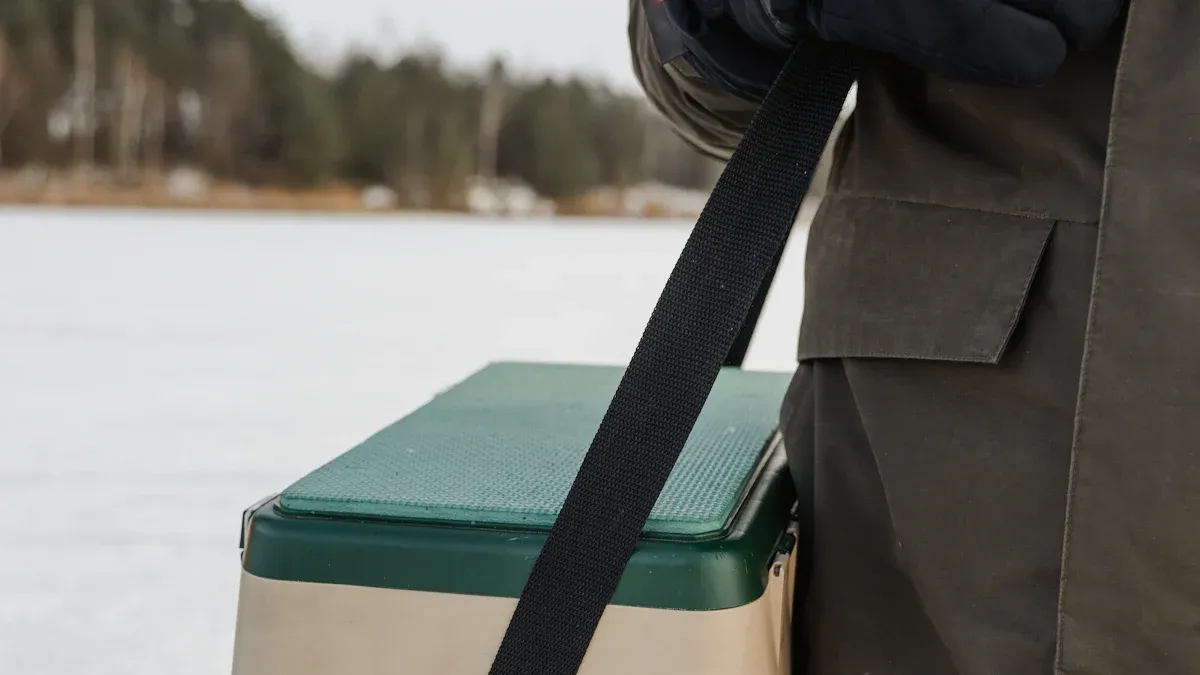
Understanding what to look for in a soft cooler begins with its three core components. These parts work together to deliver the performance you expect from a top-tier insulated cooler. A failure in one area compromises the entire system.
The Insulation Core
The heart of any large soft cooler bag is its insulation. This material is the primary barrier against heat. High-performance soft coolers use closed-cell foam, like NBR rubber, for its excellent soft cooler insulation properties. This foam has a very low thermal conductivity, meaning it transfers heat very slowly.
Thermal Conductivity of NBR Foam | Temperature (°C) | Thermal Conductivity W/(m·k) | |——————|——————————| | 0 | ≤0.032 | | 40 | ≤0.037 |
The thickness of the insulation also matters. A cooler with 3 inches of insulation can hold ice for up to five days. Thicker insulation creates a stronger thermal barrier, keeping your contents colder for longer.
The Exterior Shell
The shell protects your cooler from the outside world. The best soft coolers feature a rugged, waterproof exterior made from high-density fabric. You can measure a fabric’s toughness by its denier rating. Premium cooler bags often use 840-denier nylon, which resists punctures and abrasions from rough handling. The shell must also be completely waterproof. Manufacturers use IP ratings to classify this protection.
| Rating | Protection Level |
|---|---|
| IPX4 | Resists splashes from any direction |
| IPX8 | Resists full submersion in water |
For outdoor adventures, you want a cooler with a high IP rating to ensure it stays dry inside and out.
The Leakproof Seal
The final piece of the puzzle is the seal. A weak zipper can ruin even the best soft coolers by leaking water and letting cold air escape. Many standard zippers fail under stress or in harsh environments with sand and salt water. Once broken, they are nearly impossible to replace. Top-tier brands solve this with heavy-duty, waterproof zipper systems. These high-performance zippers create a 100% leakproof seal, ensuring your cooler never drips and the insulation performs at its peak.
Comparing the Best Soft Coolers by Tier
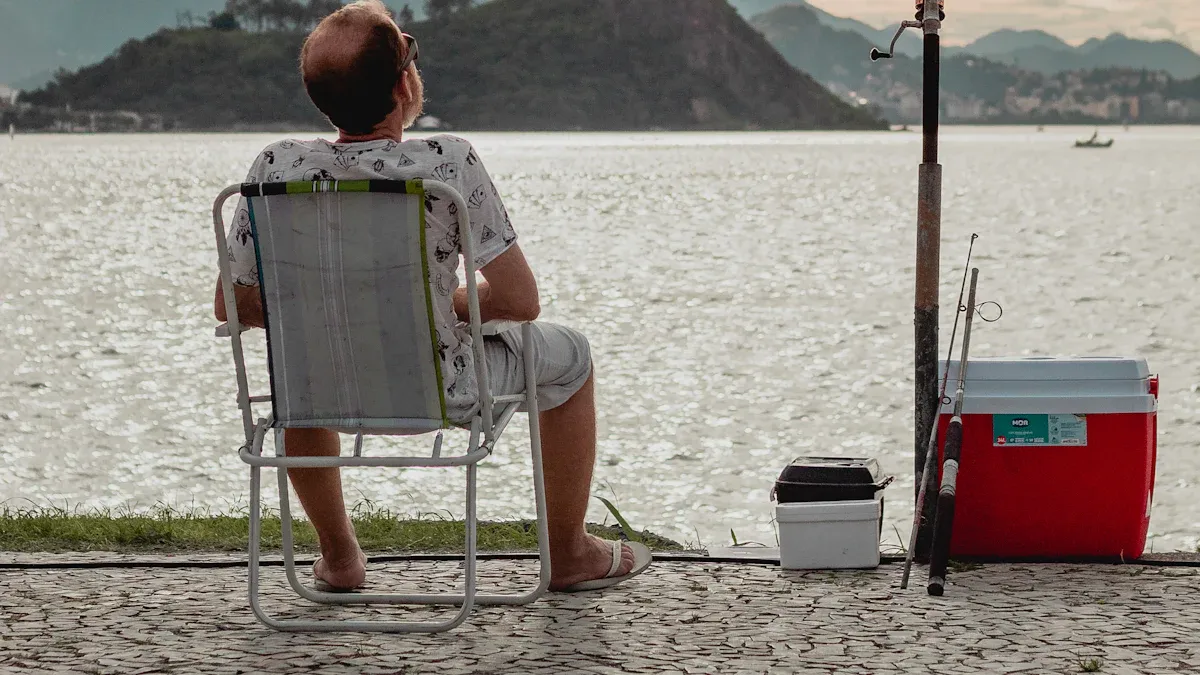
Now that you understand the core components, you can start comparing brands. The market for the best soft coolers is divided into tiers. Each tier offers a different balance of performance, durability, and price. This helps you find the right cooler for your needs and budget.
Premium Tier: YETI
YETI established the premium cooler market. You can think of this brand as the benchmark for performance and durability. YETI coolers are famous for their rugged construction and exceptional ice retention. They build their products to withstand the harshest conditions.
YETI uses top-of-the-line materials in its Hopper series soft coolers. This commitment to quality is clear when you examine the components:
- DryHide™ Shell: This high-density fabric is waterproof and resists punctures, mildew, and UV rays.
- ColdCell™ Insulation: The closed-cell rubber foam provides superior cold-holding power, keeping ice frozen for days.
- HydroLok™ Zipper: YETI calls this the toughest, most leakproof cooler zipper you can find.
- MagShield Access: On newer models like the Hopper M30, ultra-strong magnets create a leak-resistant seal that you can open and close with one hand.
YETI also backs its soft coolers with a five-year limited warranty covering defects in material and workmanship. This long warranty period gives you peace of mind. However, this premium quality comes at a high price. A YETI Hopper Flip 18 costs around $250, making it a significant investment.
Value Champions: RTIC
If you want performance close to YETI without the premium price tag, you should look at the value champions. RTIC is the most well-known brand in this category. It built its reputation by offering products with similar features and performance to premium brands at a much lower cost.
For example, you can buy the RTIC 30 Can Everyday Cooler for just $99.99. This makes it a great choice for the best everyday cooler if you are on a budget. Side-by-side tests show that RTIC soft coolers hold their own against the competition.
Ice Retention Showdown: RTIC vs. YETI In a 48-hour test at 90°F, both the RTIC Back Pack and the YETI Hopper BackFlip 24 performed similarly. This shows RTIC delivers comparable ice retention for a fraction of the price.
| Feature | RTIC Back Pack | YETI Hopper BackFlip 24 |
|---|---|---|
| Ice Retention (at 90°F) | Up to 48 hours | Up to 48 hours |
| Price | $149.99 | $299.99 |
Customer reviews often praise RTIC for its durable design and excellent temperature control. Many users report ice lasting for several days. However, some people find the zippers stiff and hard to use. Alongside RTIC, brands like KUER are emerging as smart value competitors, offering robust manufacturing and innovative features that challenge the established players.
Budget-Friendly Options
For casual outings like picnics or backyard barbecues, you may not need extreme ice retention. In these cases, budget-friendly brands offer a practical solution. Companies like Igloo and Coleman make reliable soft coolers that get the job done for a day trip.
These coolers typically use less insulation and simpler zipper systems. They will not keep ice frozen for multiple days like a premium large soft cooler bag. They also may not be fully leakproof. However, they provide a lightweight and affordable way to keep your drinks and food cold for a few hours. If you only need a cooler for occasional, light use, one of these could be the best budget cooler for you. Choosing the best soft cooler ultimately depends on how you plan to use it.
Deep Dive: KUER, The Smart Value Competitor
While RTIC is a well-known value brand, other companies like KUER offer an even smarter choice. KUER is not just another brand; it is a comprehensive manufacturing powerhouse. This gives you a unique advantage when choosing from their line of soft coolers.
Manufacturing and Quality Control
KUER controls its entire production process. The company operates five factories that handle everything from making molds to producing raw materials. This vertical integration is rare and gives KUER strict control over quality at every step. You can see this commitment to quality in their certifications.
- ISO 9001:2015: This certification shows their factories follow rigorous quality management systems.
- BSCI: This proves they meet high standards for social responsibility.
- GRS: This confirms their use of recycled and sustainable materials. These certifications mean you get a product built with precision and care.
Insulation and Performance Features
KUER’s manufacturing strength fuels its innovation. The company’s research and development team holds over 50 patents. This focus on innovation appears in the features of their soft coolers. They use a high-density TPU fabric that is completely waterproof, mildew-proof, and puncture-resistant. Inside, you will find 25mm of EPE foam insulation. This thick layer of insulation provides excellent cold retention, keeping your items chilled for extended periods. The combination of a tough, waterproof exterior and powerful insulation ensures top-tier performance.
Price-to-Performance Ratio
KUER’s control over manufacturing allows it to offer premium features at an exceptional price. By eliminating middlemen, the company passes the savings directly to you. You get advanced technology and robust construction without the high cost associated with top-tier brands. This makes a KUER cooler a strong candidate for the best budget cooler if you refuse to compromise on performance.
| Feature | Premium Brands (e.g., YETI) | Smart Value (KUER) |
|---|---|---|
| Build Quality | Excellent | Excellent |
| Insulation | High-Performance | High-Performance |
| Waterproof Seal | 100% Leakproof | 100% Leakproof |
| Price | $$$$ | $$ |
When you look at the price-to-performance ratio, KUER stands out. You receive a durable, high-performing cooler that rivals the best, making it a smart investment.
Final Showdown: Feature by Feature
You now know the tiers of the cooler market. Let’s put them head-to-head. This final showdown will help you decide what to look for in a soft cooler by comparing key features directly.
Ice Retention
Ice retention is the main job of any insulated cooler. Premium brands like YETI set a high standard with their thick ColdCell™ insulation. Value champions like RTIC and KUER also deliver impressive performance, often keeping ice for multiple days. The key to this performance is the quality and thickness of the insulation.
To get the most out of these high-performance soft coolers, you should pre-chill them before use. This simple step dramatically improves ice retention.
Pro Tip: Maximize Your Ice Retention Pre-chilling your cooler is crucial for long-term cold performance.
- Fill the cooler with ice or sacrificial ice packs the night before your trip.
- Let the ice and meltwater sit inside for at least a few hours, or up to 24 hours, to condition the internal space.
- Dump the old ice and water, then pack your cooler with fresh ice and your items.
This process cools down the insulation itself. A pre-chilled cooler fights the heat from the start, making it the best insulated cooler bag for long adventures. Whether you are planning a weekend camping trip or need the best cooler for road trips, this technique ensures maximum performance.
Durability and Construction
A cooler is an investment, so it needs to be tough. YETI’s DryHide™ Shell is famous for its resistance to punctures and UV rays. RTIC also uses a heavy-duty thermoplastic polyurethane (TPU) material. To make their soft coolers completely waterproof, RTIC uses RF welded seams, which create a permanent, leakproof bond.
KUER builds its coolers with a similar focus on durability. They use a high-density, waterproof fabric for the exterior shell and a leakproof liner to contain any melted ice or spills. This robust construction ensures your cooler can handle rough treatment on trails, boats, or at campsites. The quality of the shell and seams is what separates a good cooler from one that falls apart after a season.
Portability and Ease of Use
A large cooler is useless if you cannot carry it. Portability is a major advantage of soft coolers over their hard-sided cousins. You want a cooler that is lightweight and easy to carry, even when fully loaded. Brands across all tiers offer various carrying options, including shoulder straps and grab handles.
While many reviews focus on durability, carrying comfort is essential. Padded shoulder straps help distribute weight evenly, reducing strain during a long walk to your destination. A lightweight design also makes a huge difference. For example, a cooler that is lightweight from the start is much more manageable once you add 20 pounds of ice and drinks. This makes it the best everyday cooler for grabbing on the go. A comfortable and lightweight cooler is also the best cooler for road trips, as you can easily move it from your car to a picnic spot.
Overall Value
What is the best soft cooler for your money? The answer depends on your priorities.
| Tier | Key Strengths | Best For You If… |
|---|---|---|
| Premium (YETI) | Benchmark durability, brand reputation, proven performance. | You want the absolute best and budget is not a concern. |
| Value (RTIC) | Excellent performance that rivals premium brands at a lower price. | You want proven, near-premium features for less money. |
| Smart Value (KUER) | Top-tier manufacturing control, innovative features, exceptional price-to-performance. | You want a modern, durable, and high-performing cooler without the brand tax. |
YETI offers peace of mind with its legendary toughness. RTIC gives you a similar experience for a fraction of the cost. However, KUER presents a compelling case as the smartest investment. By controlling its own manufacturing and innovation, KUER delivers a high-quality, feature-rich cooler at a price that is hard to beat. You get powerful insulation, a rugged waterproof build, and modern design, making it a top contender for overall value.
Your journey to find the best soft cooler ends here. You now know how to choose a soft cooler by balancing insulation, the outer shell, and the zipper seal against your budget.
Final Recommendations:
- Premium Choice: If price is no issue, YETI is a proven performer.
- Casual Use: For simple needs, a budget brand makes the best everyday cooler.
- Smart Value: For the best combination of quality and price, KUER stands out among all soft coolers. It delivers premium features, making it the best soft cooler for your investment in a large soft cooler bag.
These tips will help you select the right one from the many soft coolers available.
FAQ
How do I clean my soft cooler?
You can easily clean your cooler’s interior. Mix mild dish soap with warm water. Use a soft cloth or sponge to wipe down all surfaces. Rinse it thoroughly with fresh water. Let the cooler air dry completely with the lid open to prevent mildew.
Is pre-chilling my cooler really necessary?
Yes, pre-chilling is essential for maximum performance. 🧊 It cools the insulation itself. This step stops the cooler from absorbing cold from your fresh ice. Your ice will last much longer, keeping contents chilled for days instead of hours. It is a simple but effective trick.
Why is my cooler’s zipper so stiff?
High-performance zippers create an airtight, leakproof seal. This robust design makes them stiffer than standard zippers. You can apply the lubricant that often comes with the cooler. This action helps the zipper glide smoothly while maintaining its waterproof seal. Regular care keeps it working properly.
Should I choose a soft cooler or a hard cooler?
Your choice depends on your needs. Soft coolers offer excellent portability and are lightweight. They are perfect for day trips, boating, or when you need to carry them over a distance. Hard coolers provide superior durability and ice retention, ideal for long-term stationary use.

